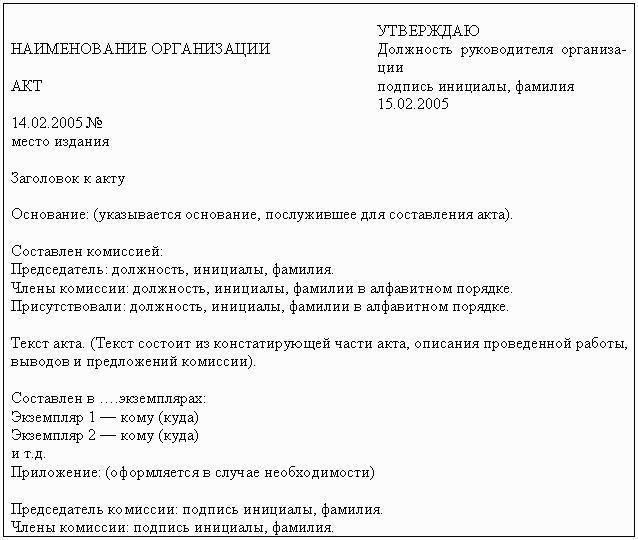Internal documents of the organization include the following types: organizational, office and administrative.
Organization Documents
Absolutely all the activities of firms and enterprises should be recorded. For this, various types of documents are provided.
Based on current legislation, all institutions, firms and private enterprises operate on the basis of published charters, regulations, staffing tables and instructions. All of these documents make up a subgroup of documents called organizational. All of them are necessary elements of any enterprise.
Thus, the organizational documents of the enterprise can be called a group of securities that govern the functions, tasks and the general structure of the enterprise or company. They regulate the organization of his work, duties and rights, as well as the responsibility of his specialists and senior staff. These are internal regulatory documents of the organization.
Charter
Charter - a legal act that governs the formation of an organization, its competence, basic functions, working conditions and tasks. In fact, this is a set of rules that governs the activities of any organization, society or citizens.
When establishing a legal entity, the charter must be approved by a group of its founders and must be registered in accordance with the law. It is the main document in the activities of organizations of absolutely any legal form of ownership and regulates their relations with other organizations or individuals, and also establishes their obligations and rights in the framework of the activity. The charter refers to the mandatory internal documents of the organization.
The content of the charter must comply with the requirements of applicable law. The charter should include:
- name and type of enterprise;
- his postal address;
- purpose and direction of activity;
- the procedure for the formation of authorized capital and profit distribution;
- other aspects of the activity.
Provisions
The provisions include regulations that determine the formation and organization of the enterprise. They can regulate the scope of activities of various officials. But in practice, as a rule, provisions are created that govern the general totality of labor relations.
The most common type of provision is a document that governs the general activities of an organization or the activities of its structural unit in particular. If the provision applies to the organization as a whole, then it determines the status of the enterprise, its competence, as well as liquidation and reorganization procedures. Provisions concerning structural units fix the procedure for delimiting their functions. What are the nuances of these internal documents of the organization?
All provisions have a unified form and are drawn up on the general form of the enterprise. Without fail, they must contain information about the name of the enterprise or unit, the date and stamp of approval. The text of the provision itself includes goals, objectives, functions, rights and obligations, general provisions, and leadership.
The provisions must be approved by the director, endorsed by a lawyer and signed directly by those who developed them. These may be deputy heads or heads of structural units.
Staffing and staffing
The document, fixing the name of units, available posts and the number of units in the state, is called the nominal number. Like the regulations, the staffing level is unified in the system of organizational and administrative documentation. It should also be issued on a common form. The number of employees has a visa of the chief accountant of the enterprise, the inspector of the personnel department, directly the head and must be certified with a seal.
Other internal and external documents of the organization will be considered below.
The document securing the position and number of employees at the enterprise, as well as the payroll, is called the staffing table. The form of the document has the unified name T-3 and is a table that contains the names of posts, tariff rates, salaries, allowances and other information. The preparation and approval of the staffing is the responsibility of the chief accountant of the enterprise.
What other internal documents of the organization exist?
Job descriptions
These are normative acts that determine the rights and obligations of employees of the organization, the scope of their activities, the scope of responsibility. They occupy a special place in the structure of internal documents of the enterprise. It is on the basis of job descriptions that a contract with an employee is developed and concluded. Thus, it is the employment contract and staffing table that are used to resolve the conflict between the employee and the employer in the event of its occurrence.
The development of the job description is the responsibility of the inspector of the personnel department, then it is coordinated with the legal department and certified by the head. Any change of material significance should be made on the basis of an order from the director. This is required by the organization’s internal regulatory documents.
Treaties
The contract is a multifunctional document. It regulates any relationship between economic entities. The contract may be executed upon the purchase or rental of premises, the guarantee or pricing, the sale of goods or services, the hiring of employees or contractors, or the involvement of outside organizations. It is, as a rule, the main document that regulates various economic relations between categories of citizens and legal entities.
The main part of the contract is the provisions on mutual rights and obligations of the parties, the procedure and terms of settlement, full details. Organization of work with internal documents lies with the head of the enterprise.
Service documents
Service documents - official documents used in the current organizational activities of the enterprise. The main types of official documentation are acts, protocols, official memos and certificates.
Acts
These are internal documents reflecting certain events or facts and compiled by several persons.
These documents are compiled in various situations, therefore, they have a huge number of varieties: these are acts of acceptance and transfer, write-off acts, commercial acts. Must be drawn up by a standing or appointed by the head of the commission. Drawn up on the general form of the enterprise (if they are internal), must have information about the organization (if they are external).
Acts consist of two parts. In the first they carry information about the subject and the basis of compilation, members of the commission. The second contains direct information on the work carried out by the commission and its results.
Signed by all members of the commission. If the act carries any material or financial burden, it must be approved by the head and certified with a seal. 
If the act affects the activities of other structural units or officials, the latter should be familiar with it.Organizational internal regulatory documents are often requested by inspection bodies.
Acts relating to important issues in the organization's activities (reorganization, verification, audit) should be kept on an ongoing basis. Less important should be stored for five years.
Protocols
They record the course of meetings and meetings, issues discussed at them and decisions made. The organization of internal documents must be followed.
As a rule, the minutes of meetings and meetings are kept by the secretary by taking notes or shorthanding. It includes the main theses of speakers with reports, draft decisions on the issues raised. It is compiled on the general letterhead of the enterprise indicating the name of the event being recorded, the date of its holding, a list of participants and a serial number.
The protocol consists of an introductory part (the chairman, secretary and the officials present, as well as the agenda are indicated) and the main part (includes sections corresponding to the agenda, descriptions of speeches and resolution - decision).
The list of internal documents of the organization also includes acts of damage to property, shortages, damage or violations during transportation. These should be written on letterhead without any corrections or blots. 
Report, service, explanatory notes
Service and memos are documents that are addressed to the head of the enterprise or any unit (in rare cases, to a higher authority). They contain information on any issue related to the activities of the enterprise or officials, proposals or conclusions.
A memo is an element of internal correspondence. It is drawn up if the question between units cannot be resolved orally. If necessary, it is endorsed by the head. It can be made both in handwritten and in print.
The memo should have a heading and the main text, revealing the essence of the event, which served as the reason for its compilation, as well as conclusions and suggestions. The date is the date of compilation. It must be signed by the drafter, and in the case of referral to higher authorities, also by the head of the organization.
Memos related to the activities of the enterprise and sent to higher authorities are kept permanently, and the organization’s internal control documents are kept for five years.
Explanatory notes are drawn up in any form and carry information on labor relations. As a rule, they contain information about the reasons that led to any violations. Depending on the importance of stored from one year to five years.
References
These are internal documents that describe and confirm facts and events. The most frequently used certificates in the company are certificates of salary and confirming the fact of the employee's work in this company. At his request, the organization is obliged to issue him a similar certificate.
Often, the company uses formalized inquiry forms to expedite the process of their preparation and subsequent issuance.
The certificate must contain information about the employee to whom it is provided, his position and salary. Mandatory must have a date of compilation, signatures of managers, stamps of the enterprise.
A separate type of reference is a reference on industrial topics, which can be provided upon request of the management. These are made up in two copies: one is provided to the addressee, the second is attached to the case.
Accounting for internal documents of the organization should be strict.
Organization documents
The following types of administrative documents are distinguished:
- Order. It is published by the organization’s management in order to solve production problems. There are orders on production issues and orders on personnel.The first include orders in relation to financing, supply, sale of goods or services, distribution of resources. The second - on hiring or dismissal, on vacation or secondment of an employee. It must be signed by the head and brought to the attention of those persons whose activities he affects.
- Decisions and orders. Acts issued with the aim of promptly resolving issues arising in production. Mostly they are methodological and informational in nature. Decisions and orders are executed identically to orders and are issued in one of the following cases: if necessary, the distribution of responsibilities or determining the timing of a particular task; in determining the procedure for using vehicles and so on. Orders, as a rule, consist of the administrative part and the ascertaining part; they have as a separate clause the appointment of the controlling body in the form of a subdivision or official. Signed by the director, numbered within the calendar year. If they relate to the main activities of the enterprise, they are stored permanently, for economic and administrative matters - five years.
Internal documents of a credit institution
Typically, credit organizations develop and approve various documents that regulate the activities of their departments and officials. These are documents on banking operations and other transactions (certain types of rules, procedures, regulations, orders, decisions, orders, methods, job descriptions and other documents in forms accepted by international banking practice).


